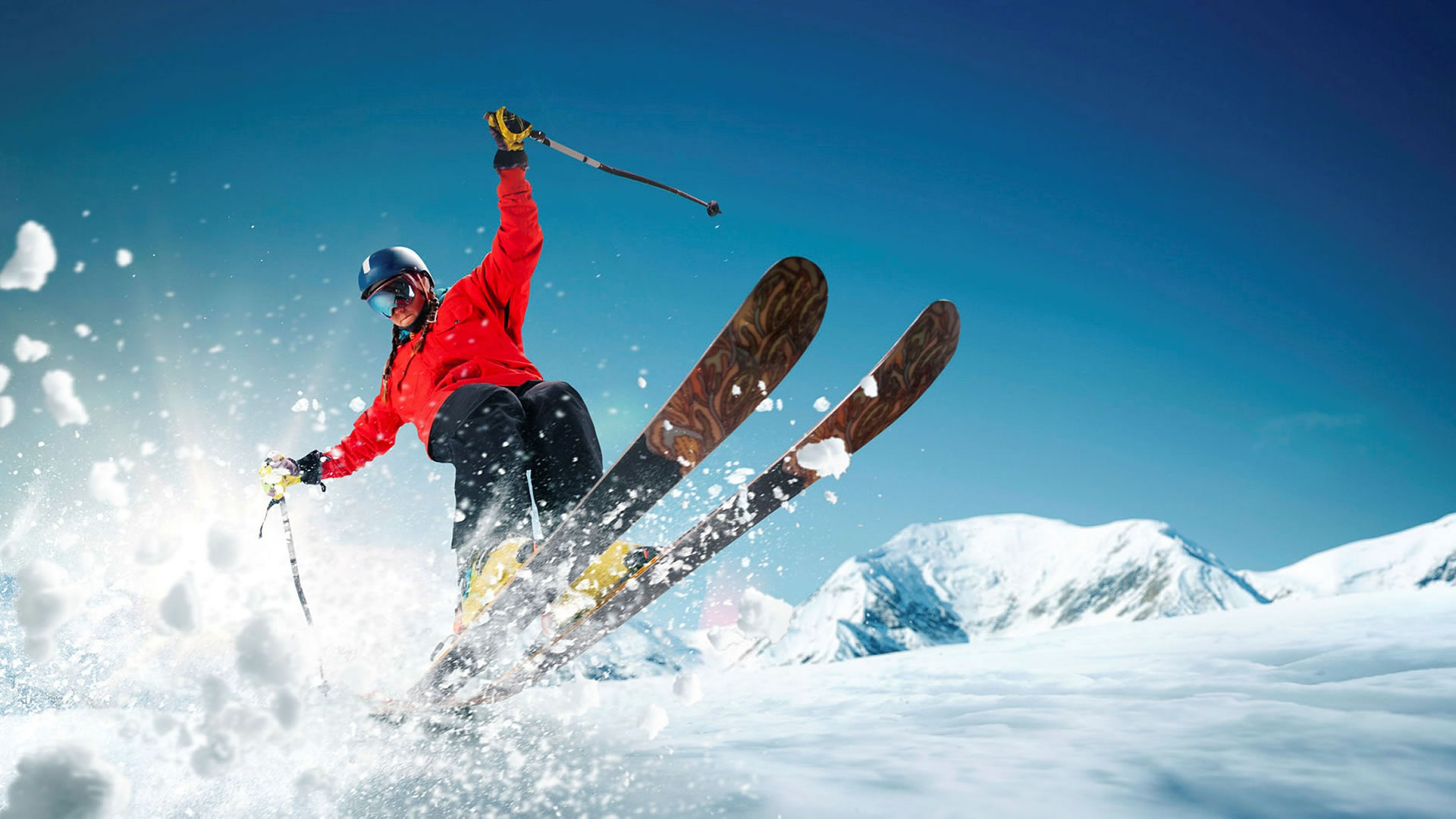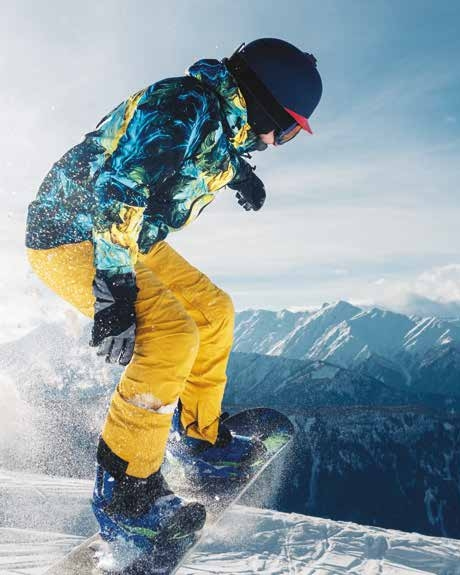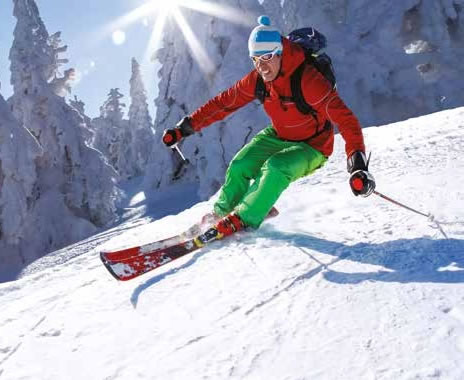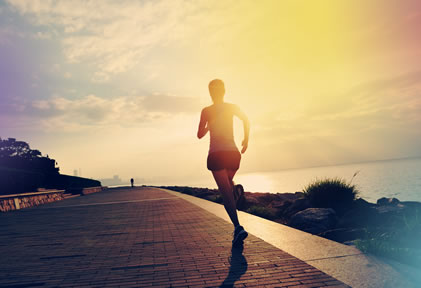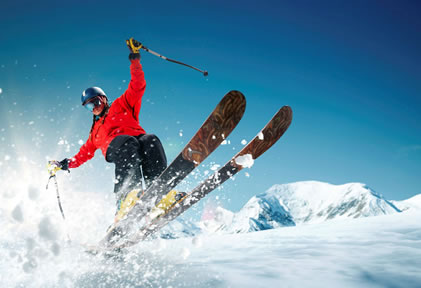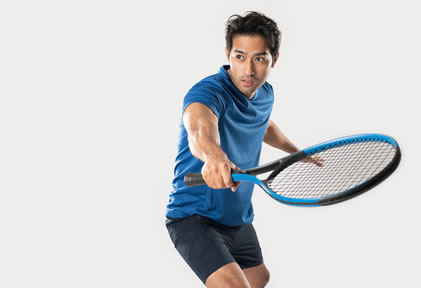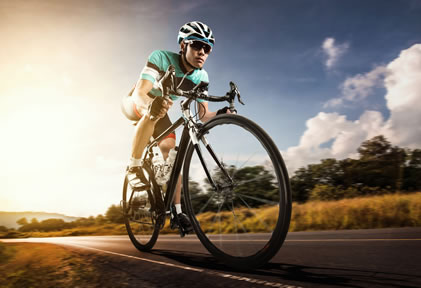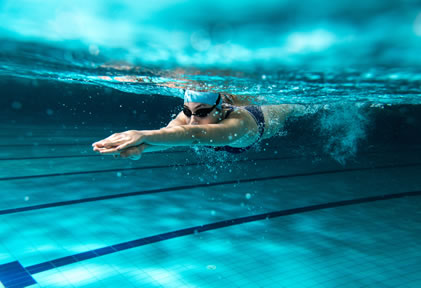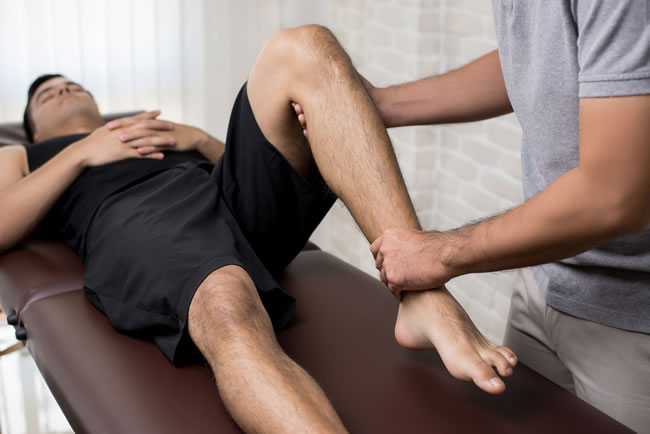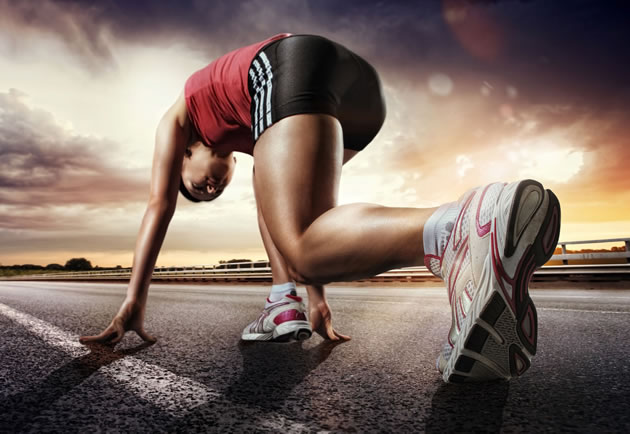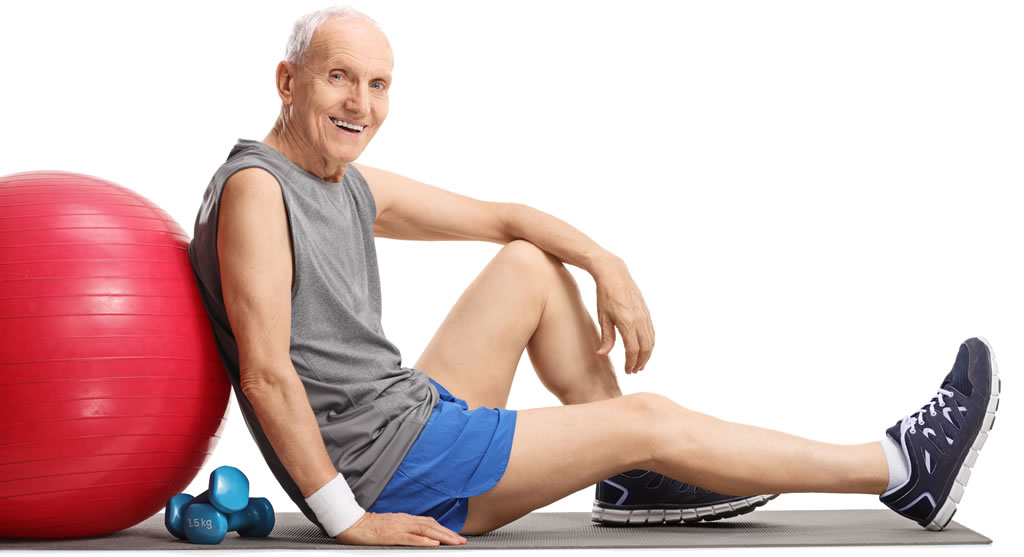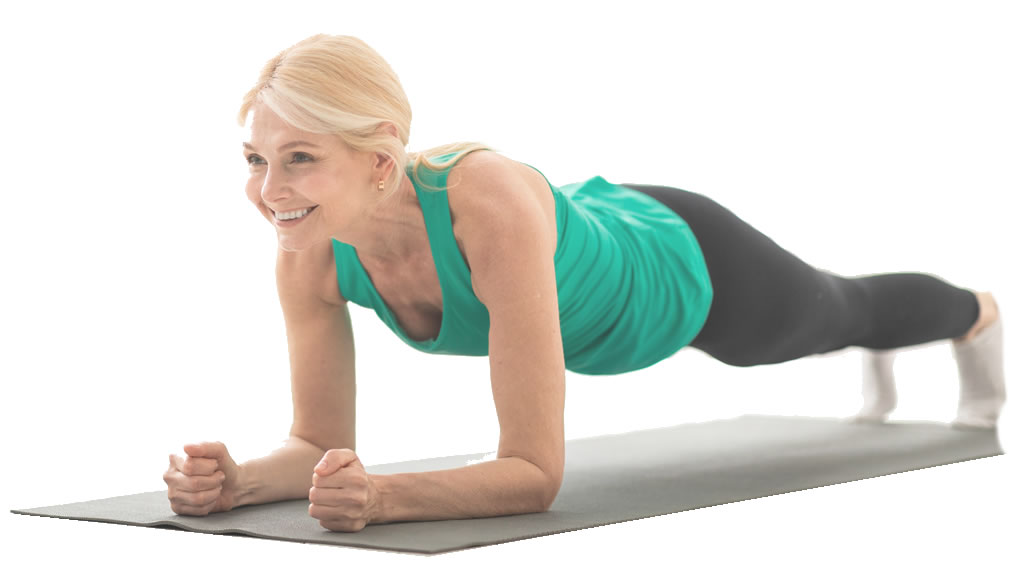Skiing
6 Strategies For Avoiding Injury on the Slopes
There’s no doubt about it, snow sports are fun. Whether you’re hurtling down the side of a mountain at 40 mph, or exploring backcountry terrain; snow sports always involve excitement, adventure and exhilaration. But snow sports are much more fun when you’re physically fit.
There is nothing worse than having to limp in early from the slopes because you’re tired or sore (or even worse, injured).
Snow sports are major workouts and if you’re not fully prepared physically for your holiday, not only will you be exhausted for most of it, but you’re also at a much higher risk of injury, let’s face it, nobody wants to come home in a plaster cast.
So, the goal of this guide is to get you as fit as possible, in the shortest time possible, and give you the best chance to have an awesome, injury-free holiday
Snow sports demand a combination of both technique as well as muscle strength and flexibility to keep stay safe on the slopes, run after run. Decent stamina (aerobic fitness) is key if you’re going to have enough energy to last the day, and anaerobic fitness is needed for the downhill bursts of activity. So, if you’re spending your hard-earned cash on a trip to the mountains, it’s just a waste if you don’t prepare.
Any preparation you can do in the weeks leading up to your holiday will improve your performance and enjoyment, as well as reduce your chance of suffering an injury. Here are our top six strategies for reducing the risk of injury while on the slopes.
2
Strength
Skiing and snowboarding require a strong abdomen, and powerful legs, and in the case of snowboarding, good upper body strength too. The stronger you are, the less likely you are to get tired. If fatigue creeps in, your form can start to deteriorate, making it difficult to last the day as well as increasing your risk of a fall. Stronger muscles better support your joints, and absorb the forces from impacts and vibrations, and this can also help prevent injury.
The quadriceps muscles (front of thigh) work in two ways on the slopes, helping as you both bend and straighten the knees. The controlled lengthening of the quadriceps from straight to bent is called eccentric training and is fundamental to snow sports. Squats, lunges, deadlifts and plyometric jumps are all good exercises to specifically strengthen your quadriceps and hamstrings (back of thighs) and glute (buttocks) muscles essential for snow sports.
Good core strength (your deep abdominal muscles) is required to sustain postures for prolonged periods, maintain balance and control and support your back from injury. Planking exercises, bridging, using a Swiss ball, mountain climber and Pilates are all excellent exercises to improve core strength. Your physical therapist can give you specific skiing or snowboarding exercises to strengthen your legs and core.
3
Balance
Balance is important in all aspects of snowboarding and skiing. Good balance will ensure better technique and efficiency when on the slopes and also help prevent falls and possible injury. Yoga and Pilates are two great forms of exercise for developing balance.
Simple balancing home drills include: Stand on one leg with eyes closed for two minutes twice a day. When this gets easy, add some small movements, such as little knee bends or brushing your teeth. You can advance this by standing on something wobbly or uneven (a Bosu ball at gym or a soft pillow at home). Stand on one leg whilst swinging the other leg around with your eyes closed, or practice picking up small objects off the floor whilst balancing on one leg.
4
Warm Up
Warming up increases blood flow through your muscles, preparing them to respond to the demands of snow sports, and reducing your risk of injury. Stretching as part of warm up also helps improve flexibility in your joints and muscles. Walking briskly, a jog, swinging your legs doing some walking lunges will all help. Warm up again following a lunch break or long wait at a ski lift when you’re out on the slopes.
A cool down and light stretch helps remove lactic acid from your muscles and keeps them subtle, which will make getting out of bed the next day easier! Once you come off the slopes, before sitting at your favourite après ski spot, walk around for 5-15 minutes, and do some stretches.
5
Equipment
Apart from physically preparing your body to cope with the demands of snow sports, some equipment can help protect it from injury. Helmets are designed to resist impact and absorb energy to minimize damage to the brain. Helmets have been shown to decrease head injury risk and severity by 22-60%. Wearing a helmet really is a no brainer (pun intended!).
Badly fitting bindings and rented equipment have been associated with increased injury risk. Make sure you have your bindings fitted and adjusted (even if you own your own equipment) by a certified technician. Ensure you also rent skis according to your skill level. Be realistic and don’t over estimate your ability as this may increase your risk of injury. The use of hip pads and wrist guards whilst snowboarding have been shown to be beneficial in lowering overall injury risk too.
6
Know your Stuff
Experience and education are key. People with low skill levels are more likely to be injured but don’t assume that experience and skill level go hand in hand. If you’re inexperienced, lack confidence or feel a bit rusty – it’s worth taking the time to attend ski/snowboarding school or get some private instruction for the first few days of your holiday. Take time to re-familarise yourself with the snow, easing onto the green and blue runs before heading off to anything more challenging.
A higher proportion of people are injured in the afternoon. This may be due to a wide range of factors, including fatigue, business on the slopes, heavy lunches, or alcohol intake, as well as changes in snow conditions. Take regular breaks through the day or carry snacks to keep your energy levels up. Ensure you stay hydrated. Just because its cold doesn’t mean you aren’t sweating from physical exertion. Dehydration can result in mental and physical fatigue. Staying hydrated can help combat the effects of high altitude. Finally, it’s your responsibility and behavior that can keep you safe on the slopes. Most injuries can be prevented, know the snow responsibility code and follow it:
- STAY IN CONTROL AT ALL TIMES
- 2 PEOPLE BELOW YOU HAVE THE RIGHT OF WAY
- 3 OBEY THE SIGNS
- 4 LOOK BEFORE YOU LEAP
- 5 STOP WHERE IT’S SAFE (ON THE SIDE OF THE PISTE), AND WHERE YOU CAN BE SEEN
- 6 STAY ON THE SCENE AFTER AN ACCIDENT
Applying these six strategies will significantly increase your chances of returning from your snow sports holiday uninjured and intact. Keep an eye on our Facebook page for more snow sports fun and advice. And have a great holiday!
Useful Links for Skiers
The Big Six Sports Injuries
Running
The high rate of running injuries makes focusing on prevention key. If you can prevent injuries, you’ll be able to run more consistently, reach a higher weekly mileage, do more challenging workouts – and ultimately, race a lot faster for longer.
Skiing
There’s no doubt about it, snow sports are fun. Whether you’re hurtling down the side of a mountain at 40 mph, or exploring backcountry terrain; snow sports always involve excitement, adventure and exhilaration.
Golf
Basic cardiovascular fitness is essential. Regular walking, running or cross-training on a stair machine, elliptical trainer, swimming, and cycling are all ways to improve general fitness.
Tennis
The sun is shining, the strawberries are ripening and the tennis season is upon us! The tournaments held at the Queen’s Club and The All England Club in London are just around the corner, inspiring many of you to get back out on the court.
Cycling
There are two main types of cycling injury, those caused by falling off (which we don’t discuss below) and the issues caused by overtraining, biomechanical stresses, often due to muscle imbalances, and incorrect bike set-up.
Swimming
Swimming is one of the most popular sports in the world. We swim in the sea, pools, lakes, streams, rivers and even ponds. And given that 70% of the Earth’s surface is water, we’re not short of opportunities.
Start your journey to a healthier, stronger body today!
RESTORATION
Once we have got you to a stage where you injury is healed, we then give you a rehabilitation programme to restore your strength and enable you to resume your sporting activities.
prevention
Are you currently engaging in sport but worried about getting injured in the future? Why not work with us so we can help get your body strong and supple to minimize any disruption to your exercise routine?
Exercise Login
Comprehensive exercise programmes specific to you.

